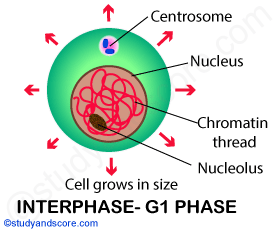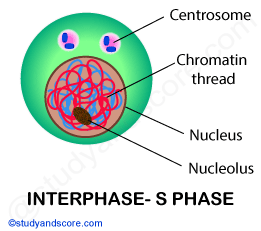The term Meiosis is derived from Greek word ‘meio’ which means lessen. This term was coined by J B Farmer and Moore in 1905. Meiotic cell division was first observed by Strasburger in year 1888. Meiosis occurs in the germ cells and it is meant to reduce the chromosome number to half. Basically, it is related with the formation of spores and gametes in plants and animals.
One of the basic characteristics of meiotic cell division is that it gives rise to four haploid daughter cells and the chromosome number of these meiotic products is exactly half that of the parent cell.
The reproduction in asexually reproducing animals is based on mitosis and as a result the chromosome number remains constant from one generation to other. On the other hand, the reproduction in sexually reproducing animals is based on meiosis. Here also the chromosome number remains constant from one generation to other as the haploid products of meiosis from both parents fuse to form diploid zygote. Thus in these organisms, the life cycle alternates between two phases: haploid phase and diploid phase.
The first division of meiosis is called heterotypic or reductional division since there is separation of homologous segments of non-sister chromatids; this is commonly denoted as Meiosis I. Chromosome number is reduced to half in this division. The second division is similar to mitosis, and is called homotypic or equational division as there is separation of homologous segments of sister chromatids. This is generally referred to as Meiosis II.
Meiotic cell division can be mainly distinguished into two phases namely Interphase or pre-meiotic phase and Meiotic phase.
Interphase: Interphase in meiosis is also known as pre-meiotic phase. It occupies nearly 90% of the meiotic cell cycle. It consists of,
Often G2 phase may be very short or almost absent. The S phase is usually longer than the mitotic S phase. It is a period of synthesis and growth, during which the cell roughly doubles in mass but without displaying obvious morphological changes.
Meiotic phase: It occupies the remaining 10% of the cell cycle. Once interphase is complete, the cell enters into meiotic phase. It is a brief period of intense structural changes. Meiotic phase is subdivided into
Meiosis I:
1. Prophase I
* Leptotene
* Zygotene
* Pachytene
* Diplotene
* Diakinesis
2. Metaphase I
3. Anaphase I
4. Telophase I
Meiosis II:
1. Prophase II
2. Metaphase II
3. Anaphase II
4. Telophase II
The term interphase is derived from Latin word ‘inter’ which means ‘between’ and Greek word ‘phasis’ which means ‘appearance’. This is a period of synthesis and growth, during which the cell roughly doubles in mass but without displaying obvious morphological changes.
Interphase as the name suggests, is the stage between two successive cell divisions during which the cell prepares itself for the process by growing in size and synthesizing new nucleic acids & proteins. Chromosomes appear as thread-like chromatin network.
Interphase in meiosis is also known as pre-meiotic phase. It occupies nearly 90% of the meiotic cell cycle. Interphase consists of the following two sub stages.
G1 or Gap-1 phase: This phase starts immediately after previous cell division. The cell grows in size and there is synthesis of new proteins and RNA which are needed for various metabolic activities of the cell.

S-or Synthetic Phase: During S phase replication of genetic material takes place and each of the chromosomes gets duplicated. The cell directly enters the meiotic phase after the synthesis phase.

G2 or Gap-2Phase: Generally G2 phase may be very short or almost absent in meiotic cell division
Summary
In summary the following are the events which take place during Meiotic interphase

- Share with your friends! -
Login to post your comment here...
- or with social Account -